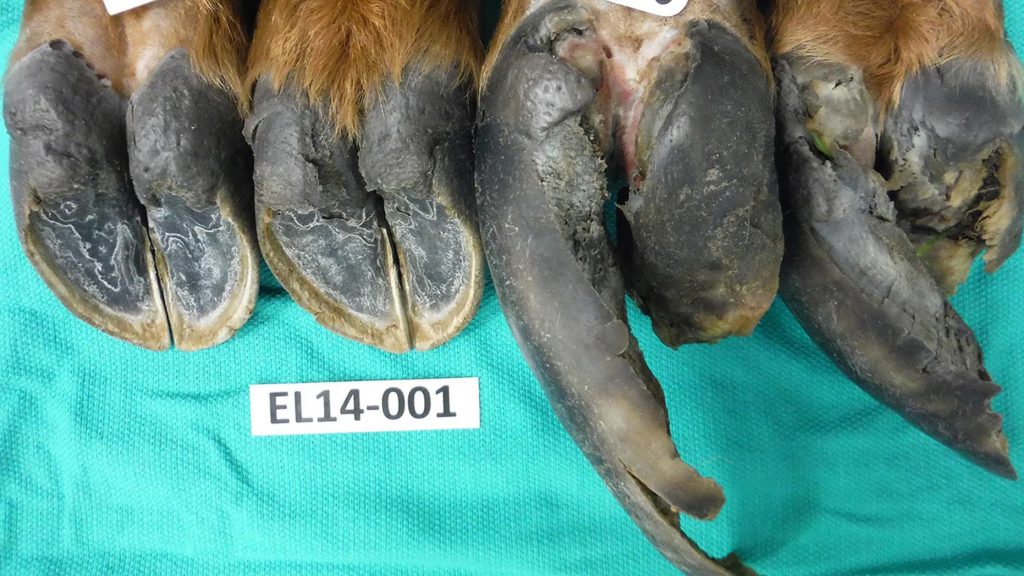Farmers in the Skagit Valley have concerns that growing elk populations[i] will transmit hoof disease (TAHD) to their livestock, and put farms and farmers’ livelihood at risk.[ii] Studies on TAHD suggest that transmission of the disease is an important health issue not only for livestock, but for the elk themselves. Our state wildlife agency seems to be ignoring the enormity of this problem. This disease has the potential to spread to domestic animals and wildlife all over the valley. [iii]
Reports of severely deformed hooves in elk have occurred in Washington since before 2000, but the number of reports increased dramatically in 2008. During the winter of 2008-2009 approximately 80% of all herds in WA were affected, with varying degrees of severity. Male and female elk of all ages were infected. Studies of diseased hooves show Treponema bacteria to be present in the lesions of affected hooves, and because of its connection with treponemes, the disease has been named “Treponema Associated Hoof Disease” (TAHD). [iv]
Elk with TAHD have characteristic ulcers on their feet along with overgrown or broken hooves (Fig 1). Affected elk are debilitated and prone to infection, malnutrition and premature death.[v]

In 2017, the WA legislature passed SB 5474, which funded Washington State University’s research into the disease. Their studies have demonstrated the transmission of TAHD through contaminated soil and through direct contact. They also showed that increased susceptibility to the disease may be passed from parent elk to offspring.[viii]
Since 2008, TAHD has spread throughout elk herds in Washington, Oregon, Idaho and California. Washington Dept. of Fish and Wildlife (WDFW) shows the disease to be prevalent in elk herds in Skagit Valley. [ix] (Figure 2) Those elk herds have increasingly settled into farmland on the valley floor. Farmers who have experienced elk intrusions on their property are seeing hoof disease in their livestock for the very first time.

Treponeme bacteria have plagued the dairy industry for decades and cause digital dermatitis in cattle, sheep and goats. Treponemes isolated from livestock are nearly identical to those in TAHD. [x] The origin of TADH in the Skagit herd, however, remains unknown.
TAHD is a devasting disease, with no treatment or cure. In Southwest Washington, a herd of 200 elk has declined to 25, with close to half of those remaining elk infected with hoof disease. The other 175 elk in the herd died a slow death from starvation and dehydration under WDFW’s watch (R. Good, written communication, March 7, 2022).
The elk that were imported to the Skagit Valley came from Southwest Washington and share their genetic susceptibility to disease. The Skagit Valley elk herd may ultimately suffer the same fate as the Southwest Washington herd. This is completely unacceptable. WDFW must acknowledge and take responsibility for the problems these elk bring and honor its operating mandates. RCW 77.04.012 states the department shall “preserve, protect, perpetuate, and manage the wildlife”…but must not “infringe on the right of a private property owner to control the owner’s private property” [xi]
